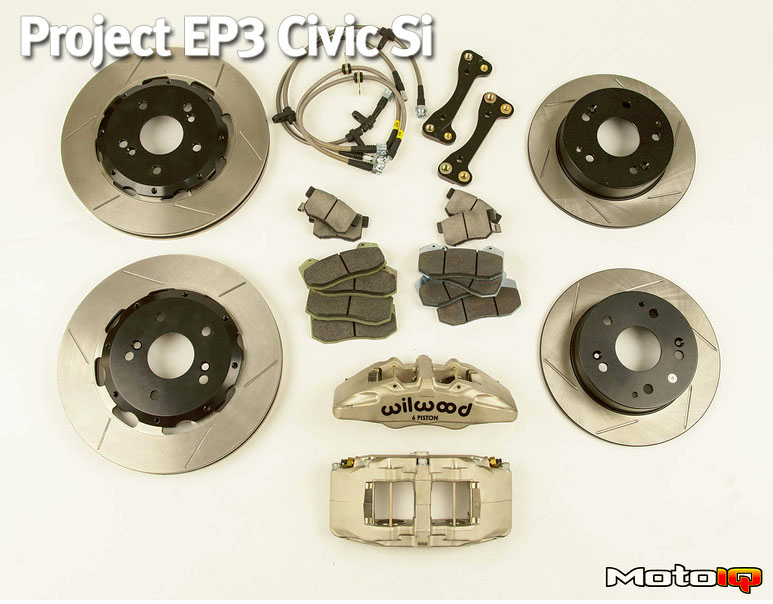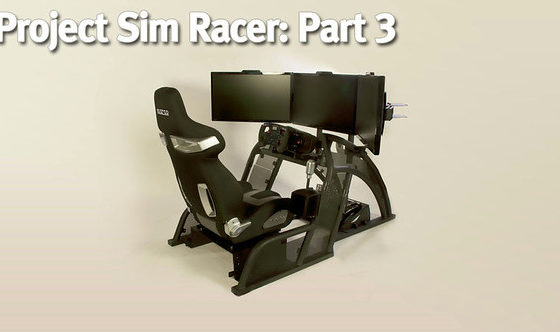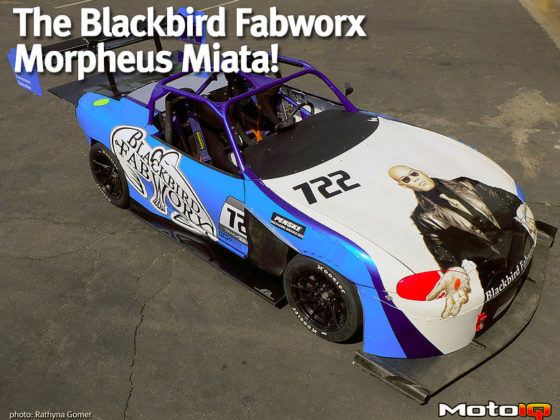,

The Fastbrakes caliper mounts are made of 6061 aluminum and have steel threaded inserts.
After owning and working on many big brake kits, steel threaded inserts are a great feature as the mounts vibrating loose has been an issue with threads going into aluminum, even with Loctite. With steel inserts, the caliper mounting bolts can be tightened to a higher torque without fear of the threads pulling out of the aluminum.

We used StopTechs braided steel brake lines. The braided steel does not expand much under hydraulic pressure, giving a harder, more sensitive brake pedal.
StopTech lines are DOT approved. A lot of braided steel lines are not. Braided lines typically fail the DOT whip test, which is a fatigue test. When you look at the molded black plastic overlays at the ends of the hoses, these prevent stress and fatigue of the braided steel near the fittings during the test and while in use.

We used Hawk HPS brake pads with our Wilwood calipers. The six-piston calipers allow for a huge brake pad for the size and weight of the car. HPS pads are a heavy duty street pad that can be used for the track in this sort of application with street tires.
For the rear brakes, we used StopTech Sport Kit brake pads which are also heavy duty streetable pads.

For the rear brakes, we used Stoptech’s Axle Pack Sports Brake kit for an RSX Type-S. This way, we could get a slotted 5 lug rear rotor to match the front, the heavy duty brake pads and the braided steel brake lines all in one shot.

For brake fluid, we used Wilwood’s EXP 600 plus DOT 4 racing brake fluid. EXP 600 sports a dry boiling point of 626 degrees and a wet boiling point of 417 degrees- outstanding numbers.
EXP 600 has been formulated to resist localized boiling and to be able to absorb any foaming or bubble created by extreme heat even after several heat cycles. This means that if you experience fluid fade on the track, the pedal can recover if you slow down for a bit.

The stock 4 lug brake system is good enough for an FWD car but we needed our 5 lug hubs to put cool wheels on. To start, Howard removed the rear wheels. Here are the awesome stock brakes.
Related










5 comments
This is so cool. I’ve been having a blast reading your articles on proper handling and suspension. That, proper Aero and intake/exhaust volumetrics are the Black Magic of Auto Design!
I’m hoping to get a nice EP3 here in Europe as well. The one with the proper K20A2. 😉
Hi Mike,
Just want clarity…
“The piston sizes are 1.62″, 1.12″ and 1.12″ for an overall area of 4.04 square inches. The stock front brakes have a piston area of about 7 square inches, so there is less hydraulic gain in the caliper than stock.”
When you refer to the Wilwood’s 4.04 square inch area, is that just for one caliper?
And 7 square inches, you’re referring to the total of the front two?
Thanks!
I made a math mistake! I re-edited the story.
Hi Mike, I’ve been enthusiastically reading the transformation of project ep3. And I have to say, I love the direction you guys choose, and on that I’d love to follow with my own ep3. I’ve been able to source some of the suspention ,( swaybare ,tirodends, balljoints exc.) What I am struggling with is the front brake kit. I was able to find the ep3 kit on the fastbrake website, but it lacked some of the parts that I read in the article. It would be awesome to follow the model you guys have made. Any guidance would be greatly appreciated if you have a chance to reply to my message. Thank you.
Call Fastbrakes and talk to them.